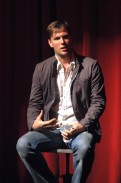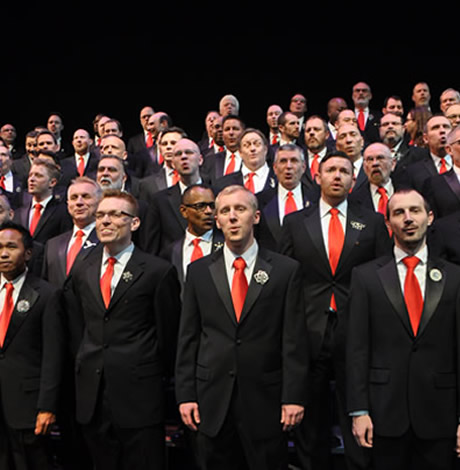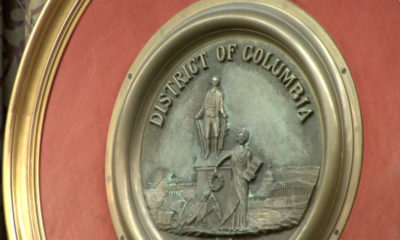Arts & Entertainment
Trey chic
Boise-based dance outfit at Harmon Hall this weekend

Trey McIntyre Project
8 p.m. tonight; 2 and 8 p.m. Saturday
Washington Performing Arts Society
at Sidney Harman Hall
610 F Street N.W.
Tickets $25-$75,
Wpas.org or shakespearetheatre.org/tickets
202-547-1122
When the Trey McIntyre Project performs tonight in Washington, viewers, obviously, will have a sense of what they’re in for. But that’s not always the case in Boise, Idaho, where the company is based.
The 41-year-old Trey McIntyre chose the unlikely locale after a nationwide search for a host city and, all things considered, found Boise the best fit. His dancers have made a splash there by launching what they call “SpUrgans” — spontaneous urban performances — where McIntyre says, “we will go into an office or into a park, or into a restaurant, do our dance and get out,” basically, guerilla-style dance done with a boom-box for music and flying feet and swiveling hips, startling observers.
The whole point of a “SpUrban,” he says, is to surprise, to connect viscerally and unexpectedly, site-specific however, seeing the dance environment writ large — to go directly where people live and work in the community itself. His dancers also perform at games of the Idaho Stampede, the local NBA team, where they sold 300 tickets to one performance.
This weekend’s performance, of course, will be less out of the blue.
At Harman Hall, McIntyre promises a high-profile presentation of three works, two of them — “Ma Maison” (2008) and “The Sweeter End” (2011) — he choreographed to be performed to the recorded music he commissioned from the New Orleans jazz band, Preservation Hall, in two salutes to “the Big Easy,” a city he has grown to love.
The brightly colored “Ma Maison” costumes feature Mardi Gras-style skeleton costumes and the dance is inspired by ritual and celebration of both death and the afterlife. “The Sweeter End” premiered in New Orleans in February. The troupe will also perform “In Dreams” (2007), a darkly lyrical ballet he created for five dancers set to the music of Roy Orbison songs, including the eponymous “In Dreams,” a song McIntyre remembered from its use in the 1986 film by David Lynch, “Blue Velvet.”
McIntyre is famed already after a star-studded career of more than two decades as a choreographer, with his canon of more than 80 works of contemporary ballet, set to scores as varied as classical music (Beethoven and Chopin), rock ‘n’ roll (from the Beatles and Beck to Roy Orbison), folk (Peter, Paul and Mary) and jazz (Preservation Hall Jazz Band).
McIntyre says he never came out per se. His parents asked him about it when he was 14 and matter of factly started dating a boy. The Wichita, Kan., native established his dance career after leaving home at 17 for the Houston Ballet Company. By 19 he was hired, enjoying a long run there that lasted until 2008 by which time he had been working as a choreographer, his own dancing days ending in the mid-’90s.
McIntyre’s partner of eight years, 29-year-old John Michael Schert, met in New York and knew early on they’d form a company together. It began in 2005 as a summer touring company and was established in 2008 as a full-time company, now with 10 dancers.
The dancers — now five males (including Schert) and five females, salaried for 35 weeks a year and with full health benefits — are happily settled in Boise. Now in their third year there, they are also touring with upcoming concerts at Harman Hall in Washington tonight and Saturday, hosted by the Washington Performing Arts Society (WPAS), and were scheduled to participate in a community “engagement” outreach with the Washington Ballet School, Maryland Youth Ballet and the Duke Ellington School for the Arts.
The company will also host tonight a free warm-up class and WPAS-sponsored performance for local schools at Harman Hall of excerpts from the three dances to be performed there tonight and Saturday.
Since arriving in Boise three years ago, the city has taken the Trey McIntyre Project to heart, bestowing a grant of $25,000 on the company, by far the city’s largest arts award ever, and naming the Project its first official cultural ambassador. Affiliated with Boise State University, which is renovating a 450-seat campus theater to make it suitable for dance, and housed for offices and studio space at Foothills School of Arts and Sciences, McIntyre and the company’s dancers have become virtual rock stars, recognizable wherever they go and showered with free gifts.
In 2005, the company began as a summer touring troupe, until landing on its feet full-time in Boise three years ago. Its now funded on a $1.5 million annual budget and boasts a blue ribbon national board and an advisory council with stars like Shirley MacLaine, Tony Award-winning actor Alan Cumming, and Lar Lubovich, legendary artistic director of the Lar Lubovich Dance Company.
Books
‘Dogs of Venice’ looks at love lost and rediscovered
A solo holiday trip to Italy takes unexpected turn

‘The Dogs of Venice’
By Steven Crowley
c.2025, G.P. Putnam & Sons
$20/65 pages
One person.
Two, 12, 20, you can still feel alone in a crowded room if it’s a place you don’t want to be. People say, though, that that’s no way to do the holidays; you’re supposed to Make Merry, even when your heart’s not in it. You’re supposed to feel happy, no matter what – even when, as in “The Dogs of Venice” by Steven Rowley, the Christmas tinsel seems tarnished.

Right up until the plane door closed, Paul held hope that Darren would decide to come on the vacation they’d planned for and saved for, for months.
Alas, Darren was a no-show, which was not really a surprise. Three weeks before the departure, he’d announced that their marriage wasn’t working for him anymore, and that he wanted a divorce. Paul had said he was going on the vacation anyhow. Why waste a perfectly good flight, or an already-booked B&B? He was going to Venice.
Darren just rolled his eyes.
Was that a metaphor for their entire marriage? Darren had always accused Paul of wanting too much. He indicated now that he felt stifled. Still, Darren’s unhappiness hit Paul broadside and so there was Paul, alone in a romantic Italian city, fighting with an espresso machine in a loft owned by someone who looked like a frozen-food spokeswoman.
He couldn’t speak or understand Italian very well. He didn’t know his way around, and he got lost often. But he felt anchored by a dog.
The dog – he liked to call it his dog – was a random stray, like so many others wandering around Venice unleashed, but this dog’s confidence and insouciant manner inspired Paul. If a dog could be like that, well, why couldn’t he?
He knew he wasn’t unlovable but solo holidays stunk and he hated his situation. Maybe the dog had a lesson to teach him: could you live a wonderful life without someone to watch out for, pet, and care for you?
Pick up “The Dogs of Venice,” and you might think to yourself that it won’t take long to read. At under 100 pages, you’d be right – which just gives you time to turn around and read it again. Because you’ll want to.
In the same way that you poke your tongue at a sore tooth, author Steven Rowley makes you want to remember what it’s like to be the victim of a dead romance. You can do it here safely because you simply know that Paul is too nice for it to last too long. No spoilers, though, except to say that this novel is about love – gone, resurrected, misdirected – and it unfolds in exactly the way you hope it will. All in a neat evening’s worth of reading. Perfect.
One thing to note: the Christmas setting is incidental and could just as well be any season, which means that this book is timely, no matter when you want it. So grab “The Dogs of Venice,” enjoy it twice with your book group, with your love, or read it alone.
The Blade may receive commissions from qualifying purchases made via this post.
a&e features
Local, last-minute holiday gift ideas
Celebrate the season while supporting area businesses

The DowntownDC Holiday Market is bustling. Union Station is decked out with its annual Christmas tree. Washingtonians have wrapped their houses and apartment balconies with festive lights and holiday decorations. The holiday season is here. And with stockings to fill and empty space under the tree, Washington’s local shops and artists have plenty to offer.
Show your LGBTQ and D.C. pride with the Washington Blade’s annual holiday gift guide.
To embrace the holiday buzz: The Blanco Nwèl cocktail from Alchy Cocktails. This Caribbean eggnog is one of Alchy Cocktail’s seasonal holiday cocktails. The flavor profile is similar to coquito, a traditional Puerto Rican Christmas drink with a coconut base. As a queer and Caribbean-owned business, Alchy Cocktails has been based out of Washington since 2021. Blanco Nwèl is available in both cocktail ($24) and mocktail ($12) online and at a variety of holiday markets, including the Tingey Plaza Holiday Market, the Flea Market at Eastern Market, Union Station’s Main Hall Holiday Market, and more. ($24)

A spicy bite: Gordy’s Cajun Okra from Salt and Sundry. These spicy, tangy pickles pull on Southern Cajun-style flavors, packing a punch with paprika, cayenne, and more. Gordy’s is an LGBTQ-owned and Washington-based brand, making this gift an opportunity to support a local LGBTQ business straight from the jar. This pantry staple is available on Salt & Sundry’s website and at its locations in Union Market, Logan Circle, and its Georgetown holiday pop-up store. ($14)


To celebrate Washington pride: The DC Landmark Tote Bag from The Neighborgoods. Native Washingtonians, visitors, friends and family alike will find something to love about this Washington-themed tote bag. Food trucks, the 9:30 Club, the Metro logo and pandas from the National Zoo are just some of the city’s landmarks depicted across the tote in a red, white, and blue color palette. The tote is a part of the DC Landmarks collection, which donates 10 percent of its sales to the American Civil Liberties Union. The Neighborgoods itself is a local, woman-owned business built out of a passion for screen-printing in 2013. The 100 percent cotton canvas tote is for sale online or at the DowntownDC Holiday Market. ($22)
To give friends and family their flowers: The Flowers Bandana from All Very Goods. This 100 percent cotton bandana was designed in Washington and hand printed in India. Its uniqueness comes in being covered with the faces of Black women, representing a “love letter to all women but especially Black women,” according to All Very Goods. The Black woman-owned and operated business, based out of Northwest Washington, has a mission to celebrate diversity and representation through its products. The bandana intends to give Black women their “flowers.” The Flowers bandana is available for purchase online. ($24)

To unlock culinary creativity: The Curious Chef Gift Collection from Each Peach Market. This customizable collection of kitchen oddities — ranging from tinned fish to chili oil — is a quirky gift for the most inventive chefs. The collection is available in a Standard Santa, Extra Goodies and Super Holiday Size for up to $165. The Washington-based market, founded in 2013, permits customers to make the collection special by specifying what unique ingredients are packaged, including products made by local or LGBTQ brands. Each Peach Market offers assembly and pick up in-person at its Mount Pleasant shop and also offers local delivery and nationwide shipping via its website. ($85)

To give a touch of sweetness: The DC Landmark Chocolate Covered Oreo Holiday Cookies from Capital Candy Jar. Wrapped in a festive red bow, this box of nine cookies embraces love for Washington and the holiday season in one. Among the dark and milk chocolate covered cookies are images of the U.S. Capitol, the White House, the Lincoln Memorial, the Jefferson Memorial and festive hollies. The treat, packaged in a Hill East facility just a few blocks from the Capitol, is available for purchase online and at the DowntownDC Holiday Market. ($23.95)


To celebrate queer gaming: Thirsty Sword Lesbians from Labyrinth Games & Puzzles. This roleplaying game embraces lesbian culture by unlocking a world of swords, romance, and battle. Ideal for group settings, the book presents a system of world building and character identities that are best brought to life by creative minds. Labyrinth, which has been a local Washington business for more than 15 years, celebrates non-digital fun through games and puzzles that connect the community. This gift is offered online and at Labyrinth’s Capitol Hill location. ($29.99)
To make a bold statement: The “Resist” T-shirt from Propper Topper. This locally screen-printed black tee features the Washington flag designed within a raised fist, symbolizing both Washington pride, and political resistance. The shirt is made exclusively by Propper Topper, a local Washington business that evolved from a hat shop to a gift store since opening in 1990. The tri-blend unisex shirt is available both for pickup at Propper Topper’s Cathedral Heights location and shipping via the online site. ($32)

To keep it c(g)lassy: The Glass Ball earrings from Blue Moon Aquarius. Gifting can rarely go wrong when it comes to a new pair of earrings. The unique statement earrings — made of polymer clay, glass, and 18k gold plating over surgical steel — are hand cut, sanded and assembled in Washington, meaning each set is unique. Blue Moon Aquarius, a local brand, is known for its small batch jewelry and home decor designed with clay materials. Available in oxblood, hunter green, lavender, and bluestone color palettes, these earrings are available for purchase on Blue Moon Aquarius’ website and at the DowntownDC Holiday Market. ($48)

To elevate a holiday tea or charcuterie party: The Honey Flight: Tea Lover’s Selection from BannerBee. This local honey company presents the ideal gift to make cozying up with a cup of tea slightly more special. The Honey Flight contains three types of raw wildflower honey infused with fair trade Ugandan vanilla bean, chai spices, and locally sourced lemon thyme herb. The gift is also an opportunity to uplift a family company based in the Mid-Atlantic that offers all-natural, sustainable products. The flight is available online, at the DowntownDC Holiday Market or at the Arlington Courthouse and Dupont Farmers’ Markets. ($36)

For Baltimore shoppers: If you’re in Charm City, don’t miss Balston Mercantile, opened by a gay couple in June. Their gorgeous shop in the Hampden neighborhood offers an array of unique, upscale finds, from barware and artwork to cookbooks and home decor and more. (849 W. 36th St.)
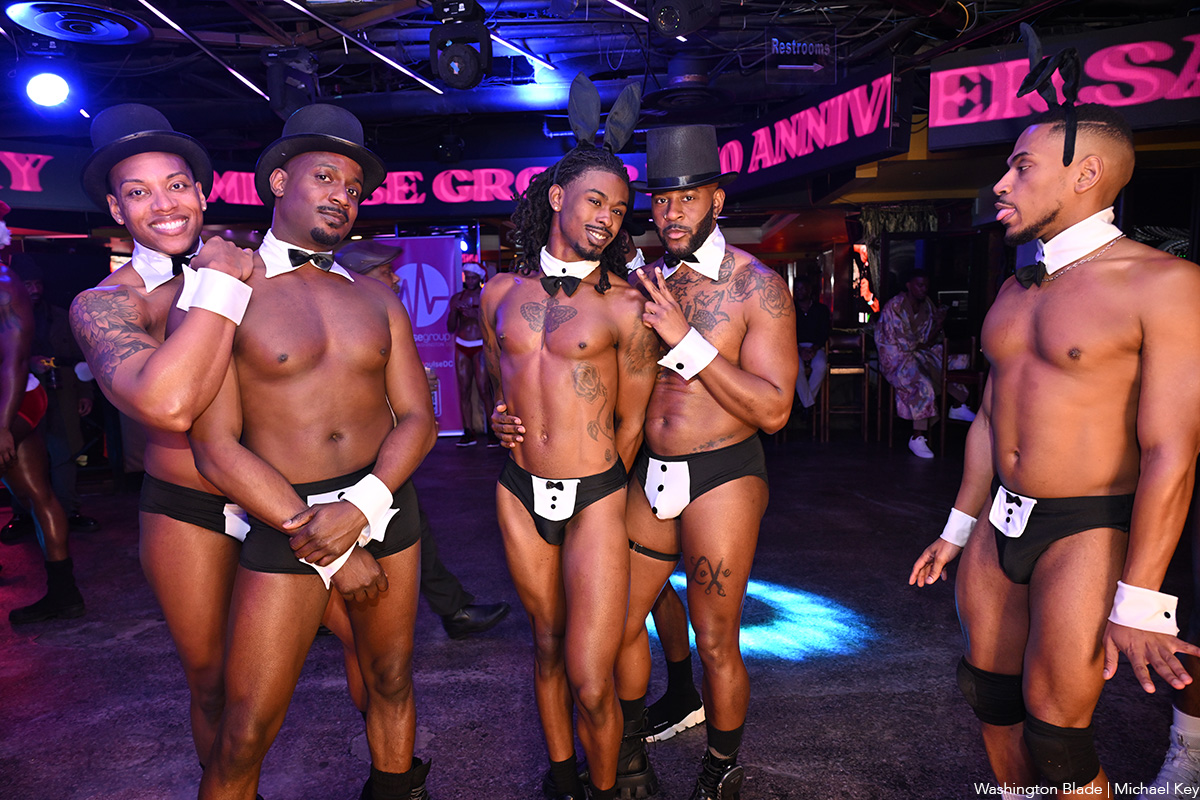
Impulse Group DC held “10’s Across the Board: A Celebration of 10 Years” at Bravo Bravo (1001 Connecticut Ave., N.W.) on Sunday, Dec. 14. Impulse Group DC is a volunteer-led 501(c)(3) and affinity group of AIDS Healthcare Foundation dedicated “to engaging, supporting, and connecting gay men” through culturally relevant health and advocacy work.
(Washington Blade photos by Michael Key)
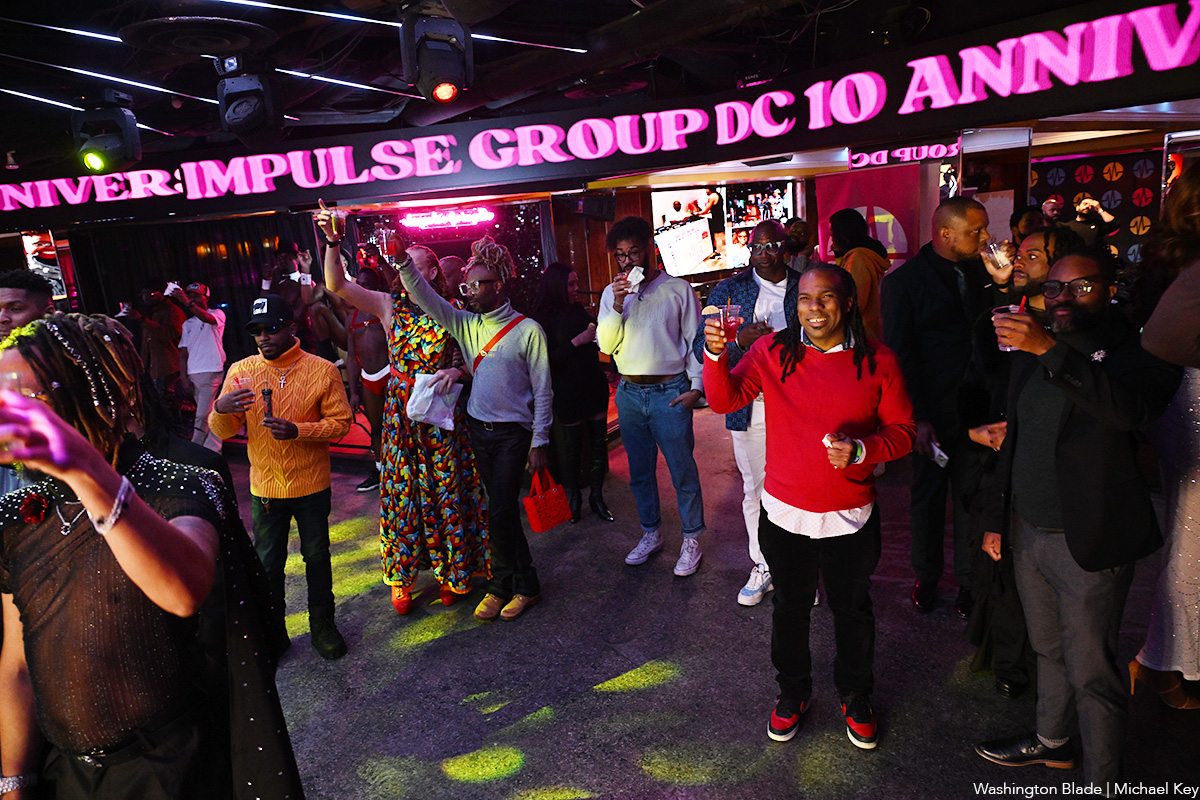




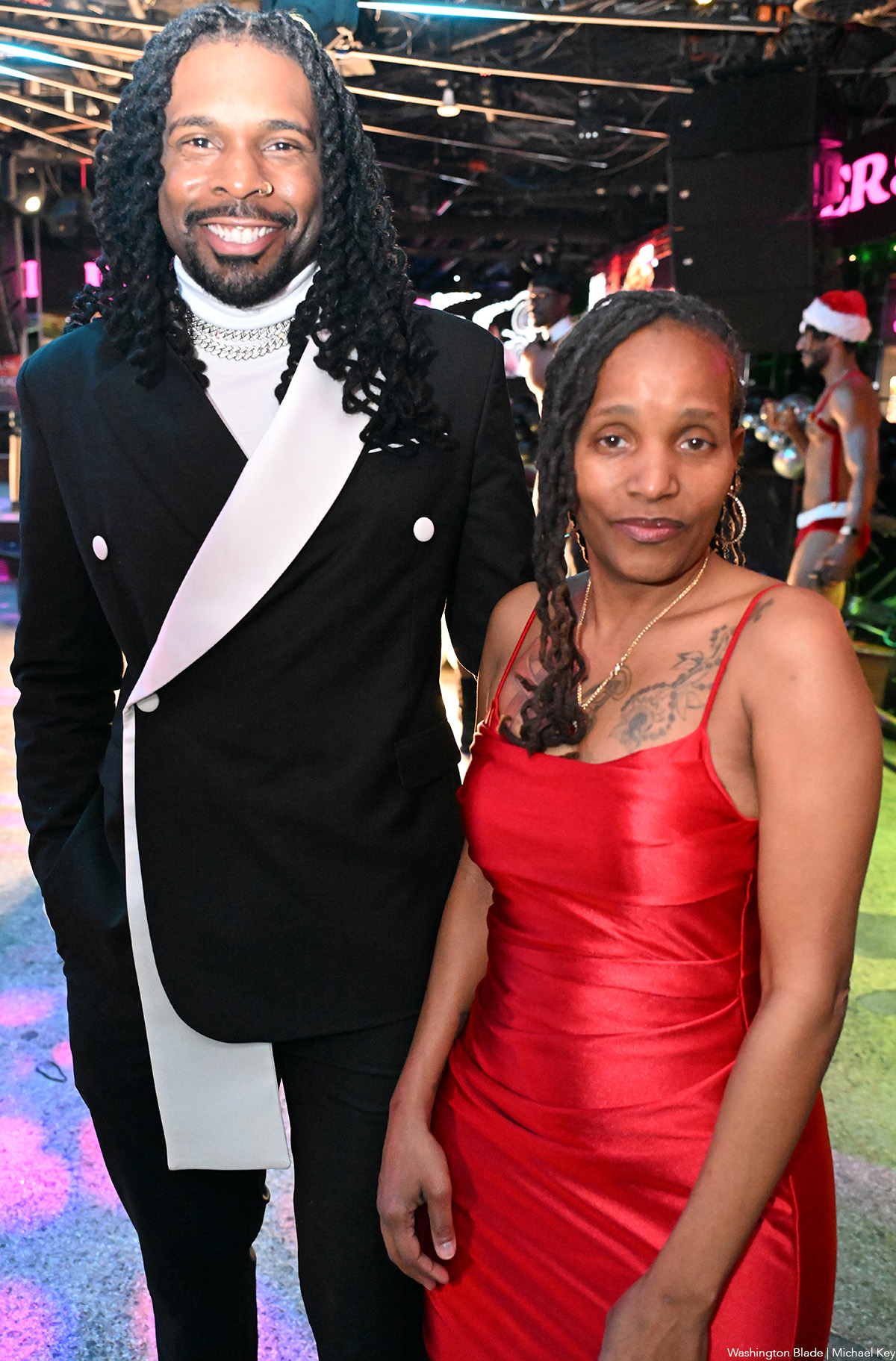
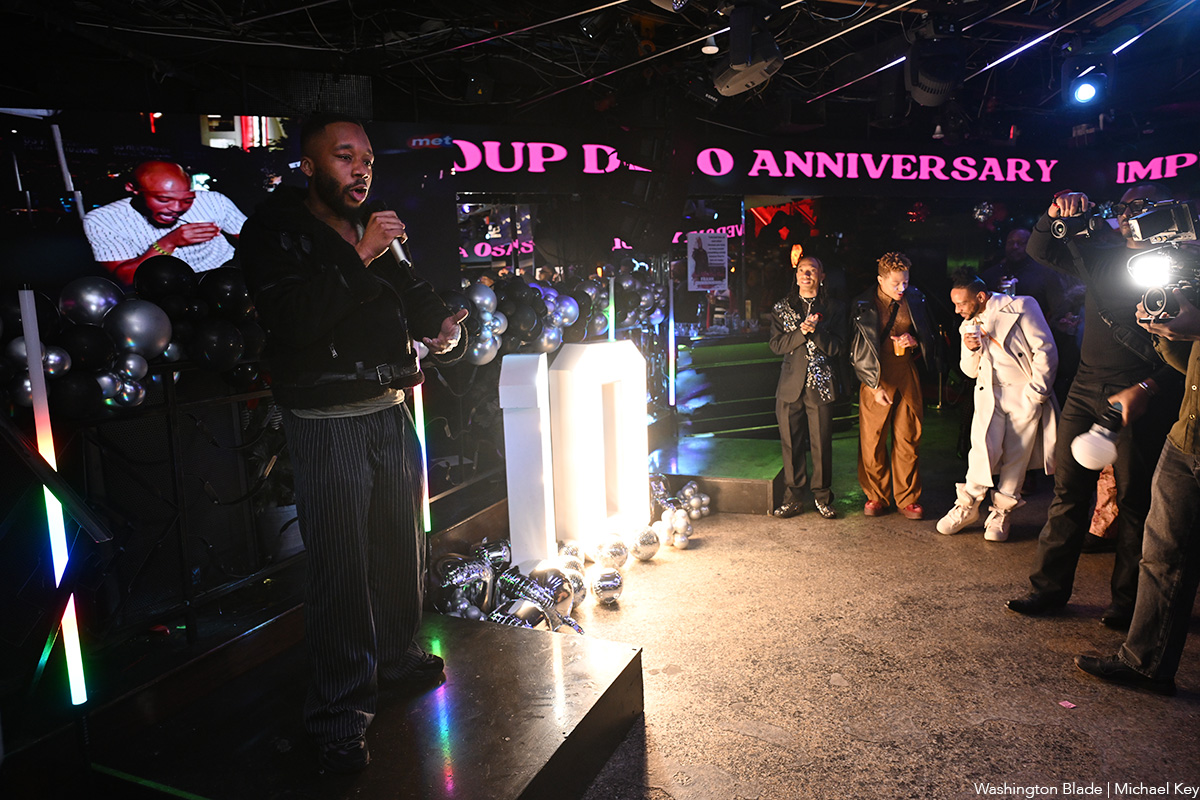
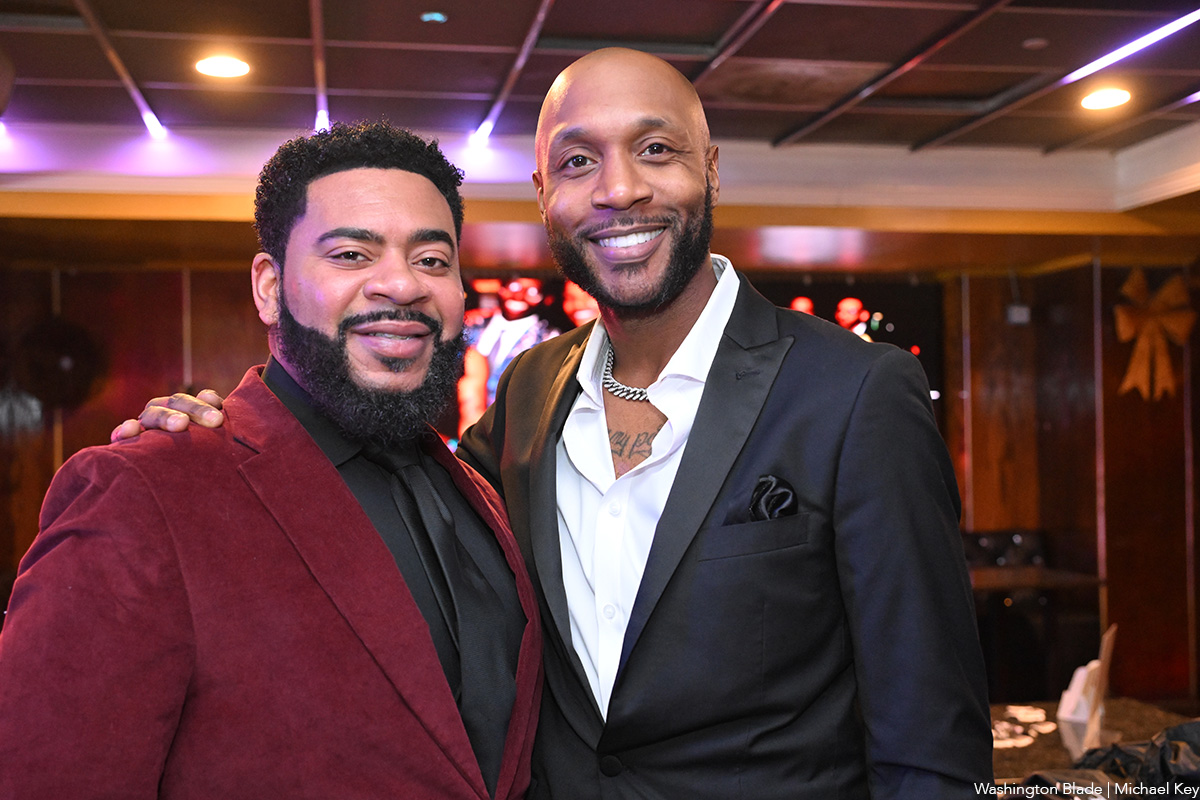
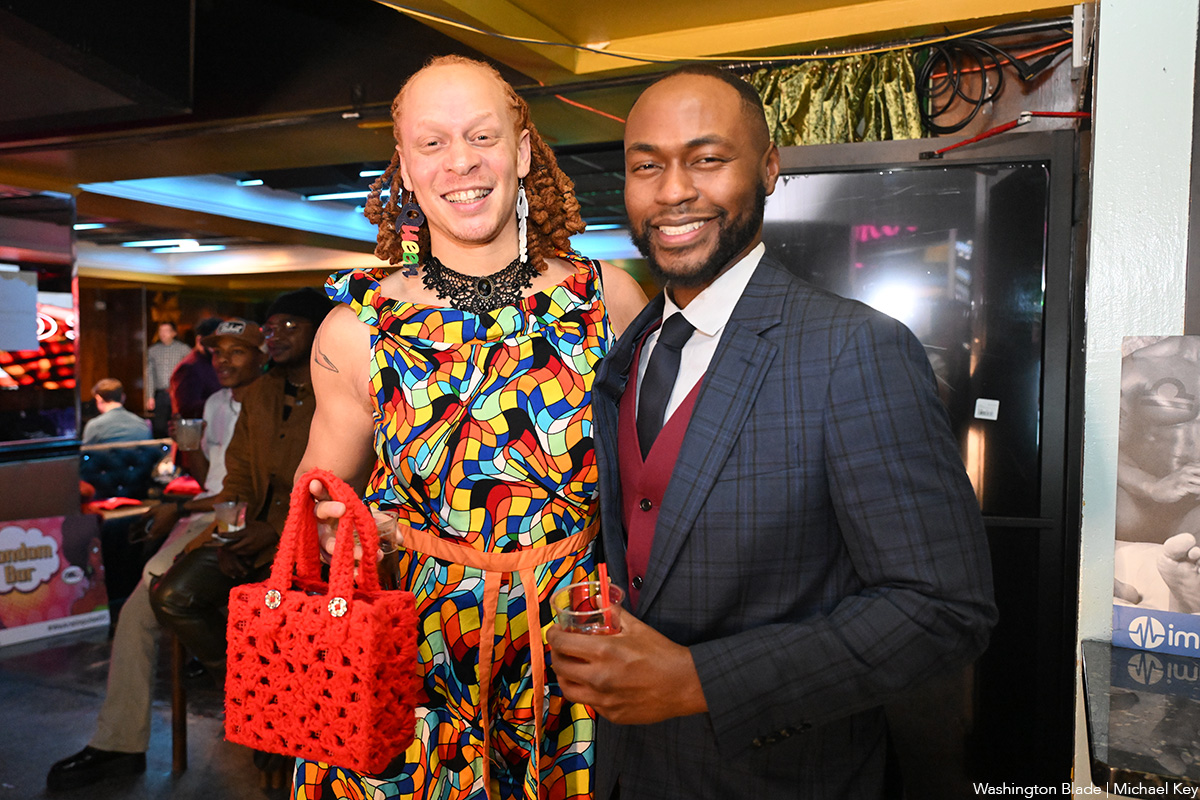
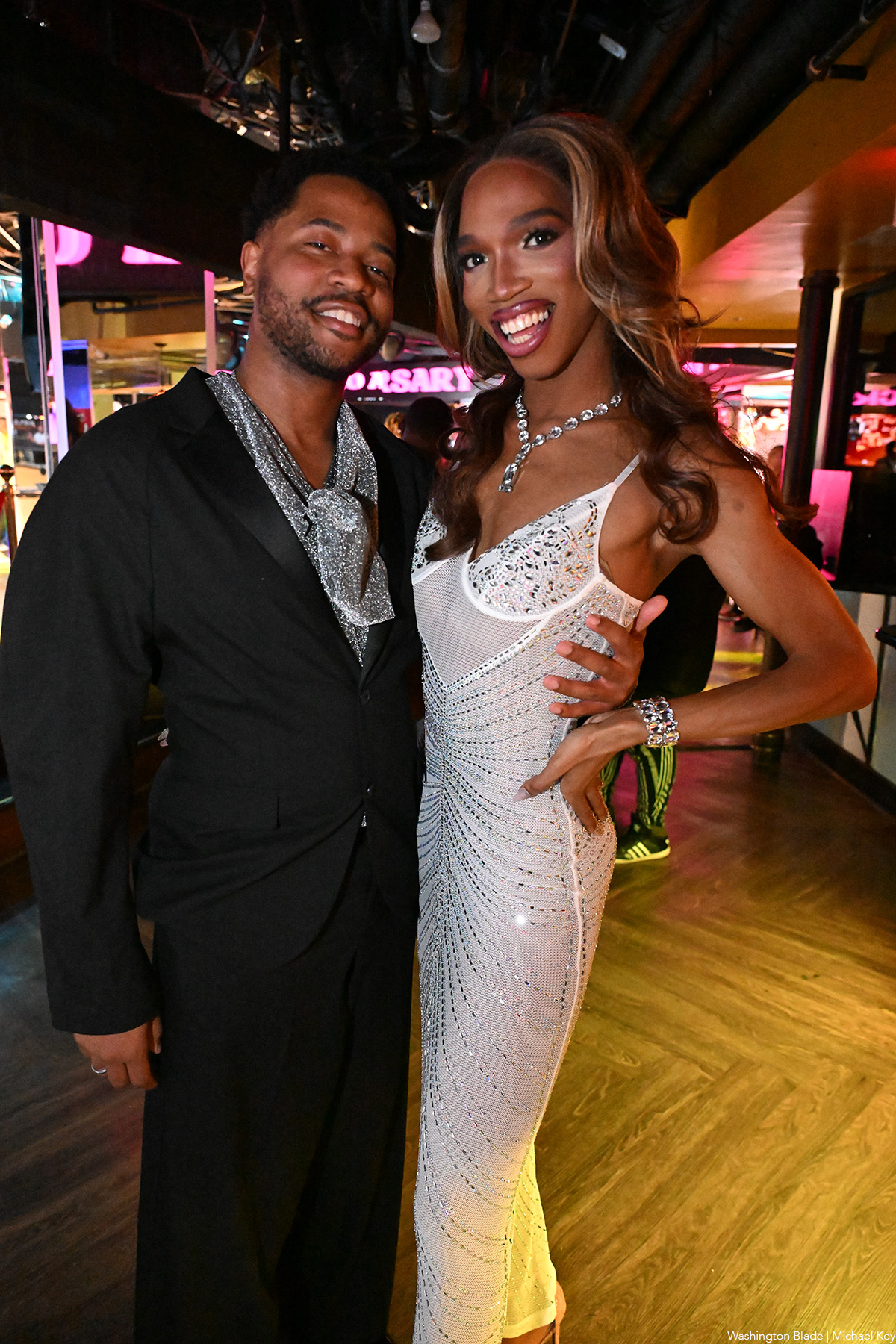
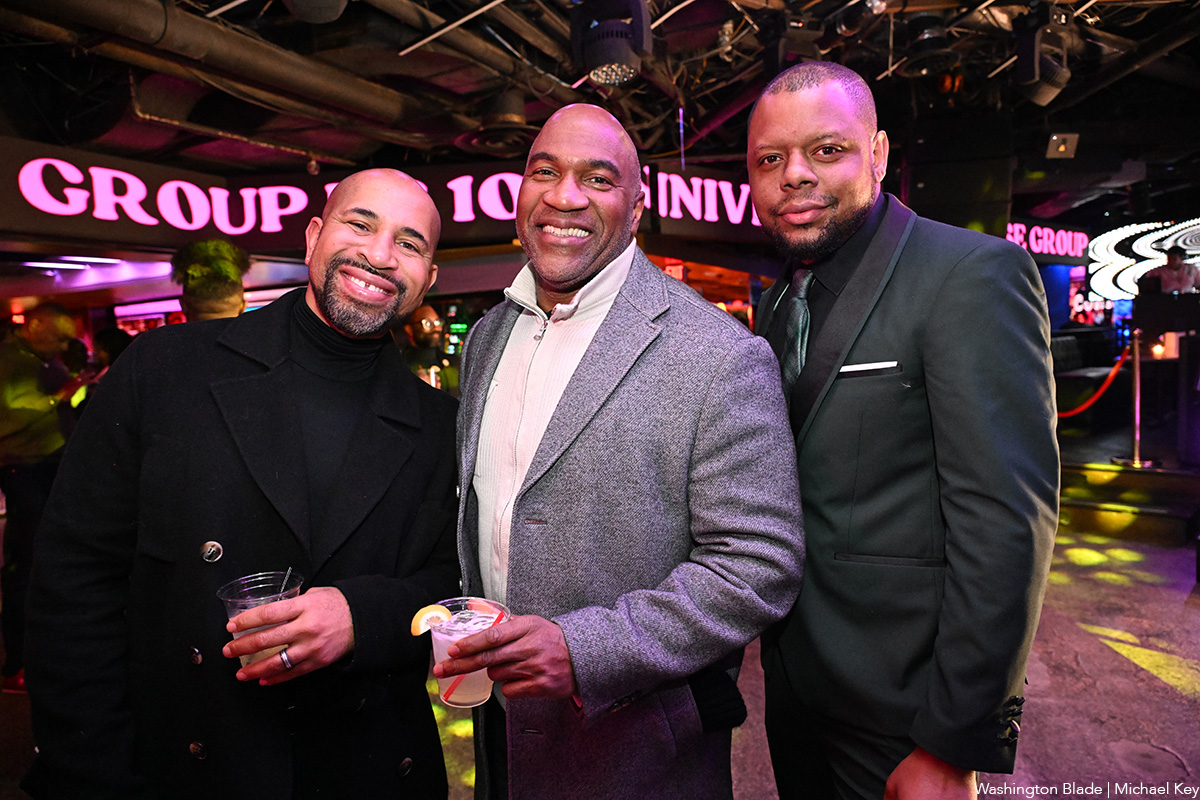

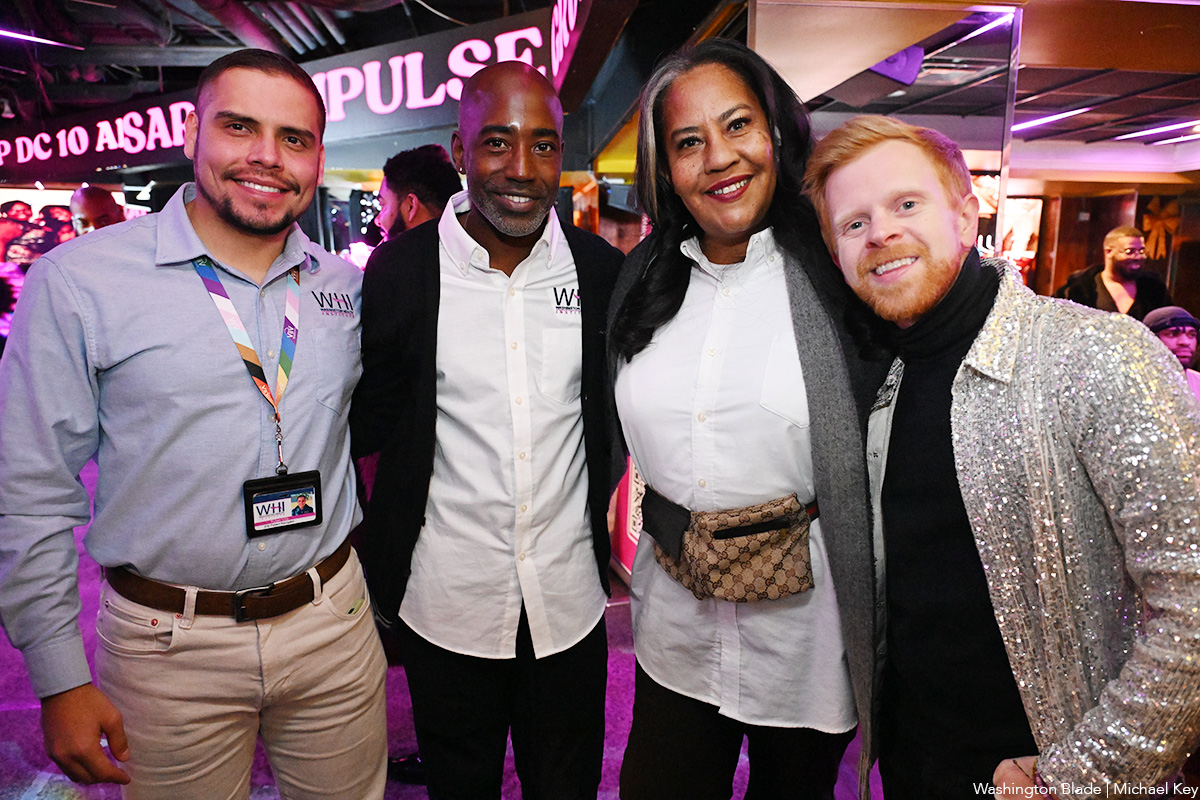
-

 Politics4 days ago
Politics4 days agoLGBTQ Democrats say they’re ready to fight to win in 2026
-

 District of Columbia4 days ago
District of Columbia4 days agoBrian Footer suspends campaign for Ward 1 D.C. Council seat
-

 Opinions4 days ago
Opinions4 days agoLighting candles in a time of exhaustion
-

 Opinions3 days ago
Opinions3 days ago2026 elections will bring major changes to D.C. government

